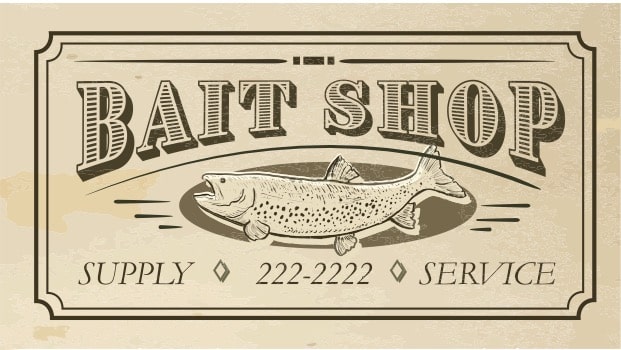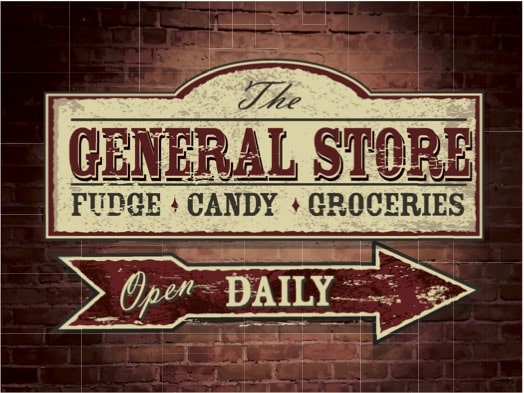Since the invention of language, advertising has been a prominent part of human communication. Today, advertising signs are everywhere in our retail landscape and provide information about the products and services available to us. As we take a look back through history to explore the evolution of advertising signs, it is very interesting to see how they have changed over time.
Definition of an Advertising Sign
Advertising signs are a form of communication that has been used for centuries as a way to promote products and services. A definition of an advertising sign can be simply stated as any type of visual, written or electronic communication that is intended to influence the buying decisions of potential customers.
Advertising signs come in all shapes and sizes, from large billboards to portable sidewalk signs, flyers, handouts and business cards. They often feature catchy slogans, attractive images and messages designed to deliver specific information about a company’s product or service. Signs may also include coupons, discounts and other promotional offers that help boost sales. Advertising signs have been around since ancient times but their use has evolved over the years.
Early Signs: Pre-Industrial Age
Advertising signs are a common form of marketing and communication today, but their history extends back to pre-industrial age. Before the Industrial Revolution, signs were used for many purposes including announcing public events, displaying public notices and warning citizens about certain activities. But during this era, advertising was mainly limited to billboards and posters displayed in public areas as well as handbills distributed by street vendors.
Symbols such as crosses, crescents or circles were often used on signage during the pre-Industrial Age to indicate the type of business or establishment within that particular area. For instance, a black cross outside of an apothecary shop would notify customers the store sold medicinal products while a red sign with a three-pointed star hanging outside an inn indicated accommodations were available.
Industrial Revolution Signage
The history of signs and advertising is an expansive one, stretching all the way back to the industrial revolution. This was a time when businesses began to emerge in droves, and entrepreneurs needed to attract customers to their establishments. To do this, they employed some ingenious methods that have been adapted and refined over centuries until today’s modern signage solutions were born.
During the early years of the Industrial Revolution, shopkeepers used painted boards with their business name and logo on them as a form of signposting. These wooden boards would be hung outside stores or adorned with flags or other decorations to let passersby know what was available within those walls. This soon evolved into hand-painted signs which could be hung from buildings for increased visibility.

Advertising in the 20th Century
The 20th century saw dramatic shifts in the way advertising was used to promote products and services. The introduction of modern technology, like television and radio broadcasts, allowed for a much broader reach than ever before. This marked the start of an age when creative marketing campaigns played an integral role in commercial success.
The early 1900s saw a rise in outdoor advertising signs, which were painted onto billboards or hung up on buildings. At this time, these signs served as one of the most effective ways to spread awareness about a product or service. As major cities began to grow rapidly and become more densely populated with people, so did the number of advertisements they saw every day. By mid-century, large format print ads had become commonplace and were used in magazines and newspapers to attract audiences. Television commercials also became popular during this period as companies sought new ways to engage viewers with their brand message.
Modern Signage Trends
The signs we see today in stores, restaurants, and other businesses are the product of a long history of advertising. Dating back centuries, signage has been used to attract customers and make a lasting impression. As technology develops so too does the way we advertise our products and services.
LED lighting is a popular choice for modern signs since it is energy efficient while still providing enough illumination for any business setting.
Digital Technology & Signage
Digital technology and signage are a relatively recent development in the history of advertising signs. In the past, most signage was created by hand, either through painting or engraving. Today, digital technology has changed the way businesses create their advertising signs. With digital print technology, businesses can quickly and cost-effectively produce high quality banners and signs that deliver maximum visual impact. Digital signage also allows for greater customization options with an ever-growing range of materials available to suit individual needs. Businesses now have access to a variety of creative options when it comes to creating eye-catching designs for their signs. Furthermore, digital printing is more eco-friendly as it produces fewer emissions than traditional sign making processes, making it one of the preferred choices for many businesses looking to reduce their environmental footprint while still delivering powerful messages to customers.
Portable Sign Advertising
Portable sign advertising is a type of outdoor advertising that has been used for centuries. Portable signs are usually crafted from metal, wood, or plastic and can be found on the sides of roads and near sidewalks in both urban and rural areas. Portable signs are designed to be eye-catching and draw attention to the product or service being promoted.
The use of portable signs for advertising dates back to early civilizations such as Ancient Greece, where large stone walls were used to advertise goods and services. This practice was adopted by merchants in Medieval Europe who hung banners outside their shops to attract customers. Later, during the Industrial Revolution, manufacturers developed wooden boards with painted logos that could be placed alongside roadsides or moved around in carts pushed by peddlers.
Today, portable sign advertising remains popular among small businesses due to its low cost and flexibility when it comes to placement.
Conclusion
Advertising signs have long been a major part of the history of marketing and communication. From the very beginning of their use, they have helped businesses reach customers in a cost-efficient manner, while also affording them creative freedom to make a lasting impression. In the modern era, advertising signage continues to be a very effective medium for marketers to reach new audiences and build customer loyalty.
Over time, the design elements used in advertising signs have changed; however, their core purpose remains largely unchanged. Despite technological advances that allow for more digital forms of advertisement, traditional mediums remain critical for any business’s success in reaching its target market. The artistry and creativity that goes into designing an effective sign has become increasingly important as companies compete for potential customers’ attention. With this in mind, it is clear that advertising signs will continue to play a critical role in business promotion.
Alberta Sign Rentals is the number one sign rental company in Alberta, offering many types of signs, including banners, storefront signage, portable street signs, window & floor graphics, and more. Contact us today!



